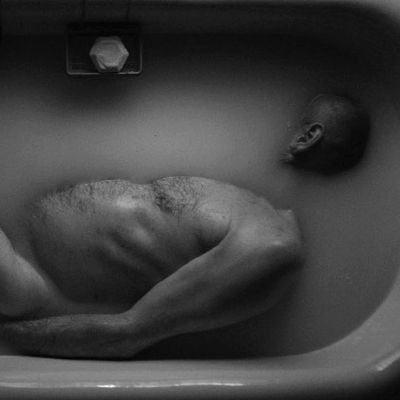
This review originally ran in January 2016, after The Eyes of My Mother played Sundance. We are republishing it now that the movie is in wide release.
A sick, simmering nightmare of a movie, Nicolas Pesce’s The Eyes of My Mother feels like what might have happened if Michelangelo Antonioni and Shirley Jackson had collaborated on a torture-porn flick. I mean that in the best possible way. Though filled with grisly, grotesque images, this is a film that doesn’t shock you with cheap scares; rather, it claws into your subconscious and lingers there. Maybe that’s why the film has had a low-key but persistent buzz throughout this year’s Sundance, ever since its premiere early in the fest. It wasn’t one of those movies to which one heard loud, immediate reactions. But every day, more and more people would ask me if I’d seen it, and what I thought, and how I had to see it, and how they themselves weren’t sure if they loved it or hated it.
Shot in widescreen black and white, the film unfolds in tense, terse fashion. In a small farm out in the middle of nowhere, a mother (Diana Agostini, her face gaunt and her eyes cavernous) tells her young daughter Francesca (Olivia Bond) about how when she was studying to be a surgeon back in Portugal, they would experiment on cow eyes, because of their similarity to human eyes. They slice open one such cow eye, and mom holds it up: “Everything we see passes through this,” she says. Appropriately, Pesce’s film plays with the seen and the unseen – it cuts away at key moments, obfuscates our view, plays with our vision.
Francesca’s life is forever changed when an eerie drifter named Charlie (Will Brill) comes to visit, nervously asks to use the bathroom, then pulls out a gun and points it at mother. What follows next is disturbing, to be sure, but it’s also presented in Pesce’s oblique, elegant style — which pulls us away from the immediate horror of what’s happening and instead sends the movie into the realm of the symbolic, as if we’re witnessing deep, unspoken fears suddenly made real.
As the film leaps forward in time, we see Francesca (now played by Kika Magalhaes) grow up, but she still remains something of a child. She continues to live on the farm, reenacting the rituals of her childhood and finding it hard to let go of the past. If it sounds like I’m being vague here, that’s because I am — not just because I don’t want to give away what happens, but also because to describe the events of the film would make it sound like the one thing it’s not — an exploitative horror flick. While Pesce occasionally offers up a graphic image or a nauseating, disturbing sound, most of the film is defined by what we don’t see, or hear.
The twisted dream logic of Francesca’s actions also prevents the film from ever slipping towards straight horror. Some at Sundance compared the film to The Babadook, but it lacks that film’s more overt scares and lived-in milieu. No, a more appropriate comparison point might be Under the Skin. You don’t “care” for these characters or worry about their fates, which is not to say that you don’t care for what happens in the film itself; the dimly lit photography, the elegant framing, the ominous soundtrack, and the incantatory dialogue all serve to create a gripping, unreal atmosphere. One could even say that the mood Pesce weaves is more of a character than any actual person in his film. And somewhere in The Eyes of My Mother’s sustained longing for the past, for preservation and for stasis, it captures our collective fear of the unknown, of moving on, of growing up.


